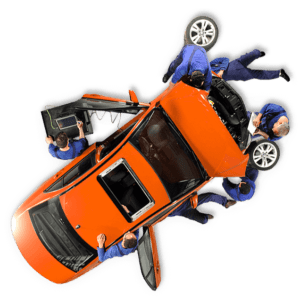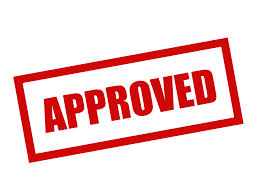
12 Oct Four Ways to Improve Pre-Owned Efficiency
Four Ways to Improve Pre-Owned Efficiency
Managing modern pre-owned operations in a profitable manner has become an increasingly difficult venture in today’s competitive and aggressive market. Finding quality vehicles that can be priced to move quickly has become more expensive than ever before for dealerships. Add to that the increase in costs to transport, recondition and get that inventory ready for the showroom and it’s no wonder dealerships are struggling to maintain a healthy profit margin when it comes to pre-owned vehicles.
We sat down with Dennis McGinn, CEO of Rapid Recon (www.rapidrecon.com) to examine four ways dealerships can manage and improve their profit margins without eroding customer experience or the quality of vehicles.
1. Reducing Throughput Times
Repairs, reconditioning and holding costs all increase a vehicle’s relative cost. Keeping these costs down means a healthier profit on every vehicle so it’s more important than ever to move your new inventory through service and clean up as rapidly as possible. When examining your throughput times, it’s critical to track and monitor how long it’s taking to effectively move vehicles through the transport, service and detail procedures.
There is a hidden margin erosion in holding cost, or the number of days a vehicle is held. This is a cost that is normally overlooked but which can add to the overall expense of acquiring and preparing new inventory. It should be examined carefully when examining your processes. Each additional day it takes to complete inspection, repair and reconditioning runs an average of $34. So a vehicle that is taking 10 days to get through your transport, service and detail procedures is costing you an addition $340.
Dennis McGinn suggested dealerships develop an agreed upon workflow and then monitor the flow. The goal, he suggests, is to aim for a 3 day turnaround time on all new vehicles in order to control the holding costs and improve “time to market”.
2. Service Repair Approvals
The greatest mutually beneficial relationship in pre-owned operations is the one that exists between pre-owner sales and their service department. Sales and service support each other by improving the value of the dealership on the whole. Dealerships with a reputable service department are seen as providing more reliable vehicles which attracts more customers. Those customers, in turn, become regular visitors to the service center in order to keep up routine maintenance. Even though these departments are mutually beneficial they are not always working together dynamically.
Many times, the service department has to seek approval for even common tire and brake replacements on pre-owned vehicles. Requiring outside approval for routine and common repairs slows the service turn-around time and takes away the autonomy the department needs to provide efficient service to customers. Work with service managers to develop specific thresholds and parameters they can use to approve these routine repairs. This simple step will considerably speed the throughput times.
McGinn adds that implementing a tool like the Rapid Recon application can also help. These programs monitor repairs and also provide real time communication between departments, making on the fly approvals quicker as well. That means technicians can work on pre-approved routine issues and check with the pre-owned department about additional work while the vehicle is still on the lift in the service department.
3. Reconditioning Vendor Review
It’s likely that your pre-owned department is utilizing the services of a reconditioning vendor to outsource common services such as detail, dent removal, bumper repair and wheel refinishing. Since reconditioning is a detail oriented job, it’s important to measure value against quality when considering this cost.
Monitoring and tracking the cost, turnaround and time it takes to provide these services will likely show room for improvement. Compare costs for the company you currently use against other local companies or national chains. The overall quality of the work, as well as their turnaround times should be considered when comparing them to other companies.
If you’ve been working with your reconditioning vendor for a while and you’re considering moving to a different company, ask them to sit down and negotiate. Dealership relationships are often major contracts for reconditioners and it may be possible to negotiate a set of terms for your business that improves how quickly inventory can make it through the reconditioning process.
4. Alternative Inventory Sourcing
Reducing throughput time directly increases your inventory by keeping fresh inventory flowing into the pre-owned department. Sourcing inventory exclusively through auctions can take days, even weeks, by the time the inventory has been properly inspected and reconditioned. Trade in vehicles can be reconditioned more quickly but often are not the market-oriented, fast turning vehicles targeted by dealerships.
Implementing a strategy and process for acquiring private seller vehicles in your market is an effective strategy for improving your average throughput time and increasing profitability. By purchasing from private party sellers you are eliminating a large percentage of the time it takes to get vehicles front-line ready and the dealership has the ability to target the highest return on investment. There are a number of effective tools available to dealerships for sourcing and acquiring private seller vehicles in your respective markets.
Pre-owned efficiency isn’t all that different from a professional baseball team managing a season. Both are based on averages and should be viewed as marathons, not sprints. Baseball seasons consist of well over a hundred games. When a strategy is implemented and the results are monitored and reviews, it’s possible to incrementally improve a baseball team’s performance throughout a season. The same is true with a pre-owned operation, consistent and effective review of your processes can increase your profitability by incrementally improving your pre-owned department effectiveness.


Sorry, the comment form is closed at this time.